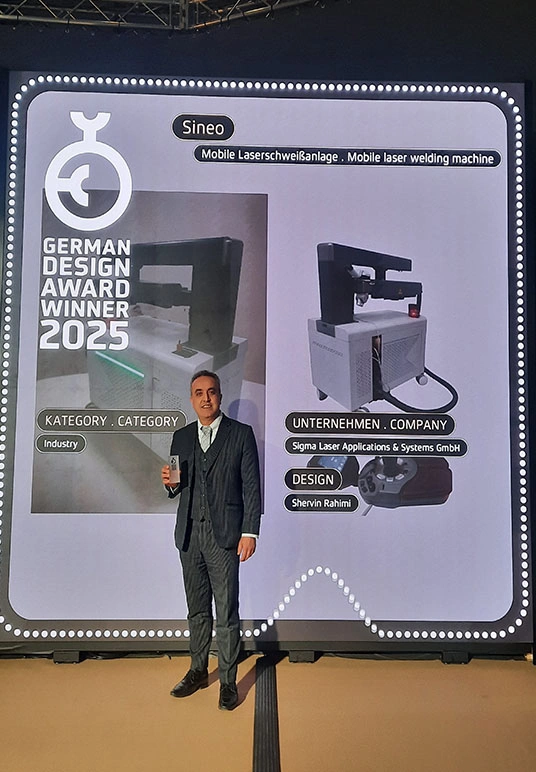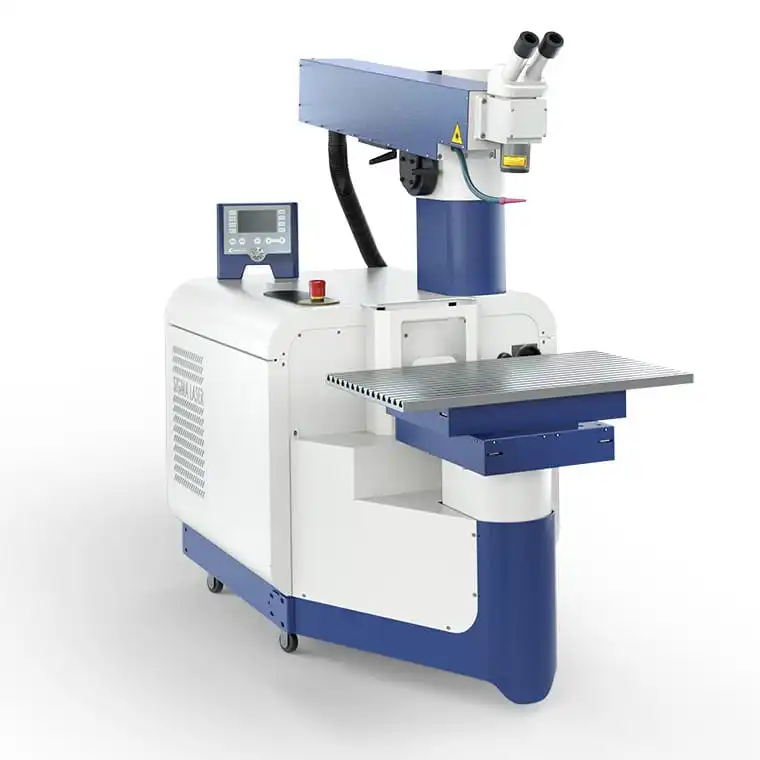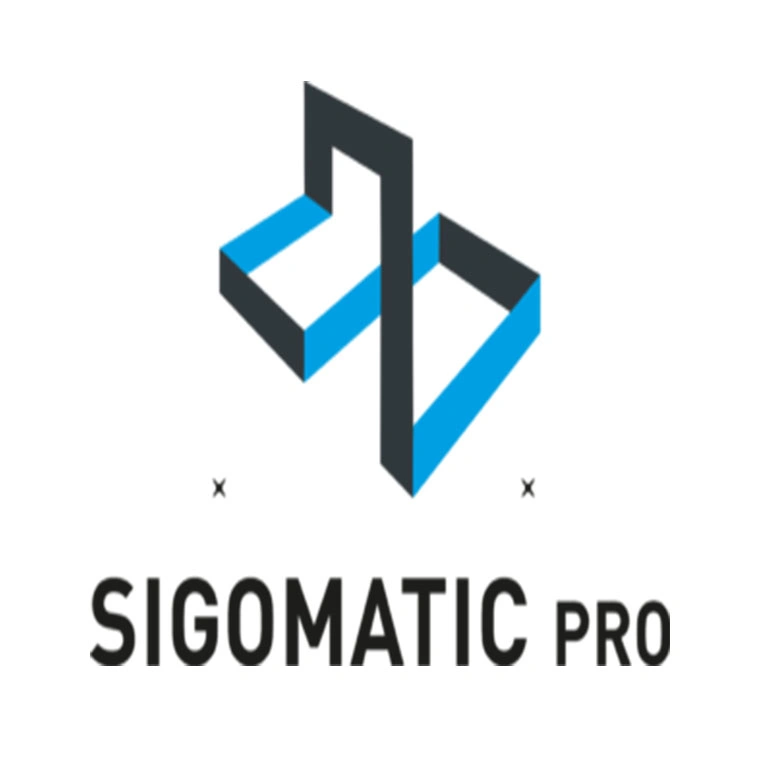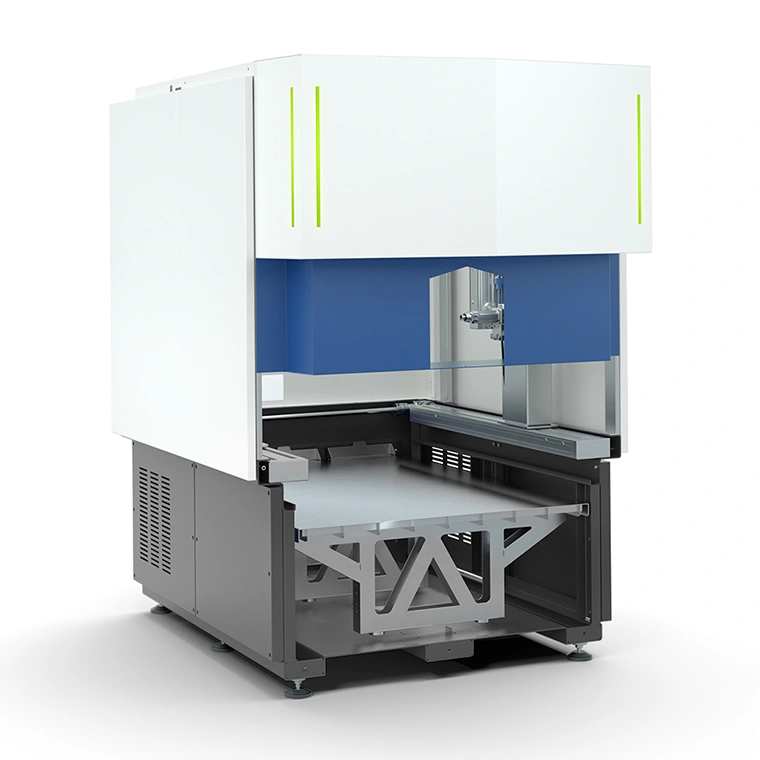Laser Welding in the Electrical Devices Industry
The electrical devices industry demands exceptional precision, safety, and reliability—especially when it comes to joining delicate components. Laser welding has become a transformative solution for manufacturers in this sector, offering non-contact, low-heat, and highly accurate welding processes. Whether you’re assembling micro-connectors, sensors, battery components, or power electronics, laser technology ensures consistent results without compromising structural integrity. In this guide, explore how Sigma Laser empowers the electrical industry with cutting-edge solutions that meet modern manufacturing needs.
Recommended Laser Welding Systems for Electrical Devices Applications
In the electrical devices industry — where precision, thermal control, and material versatility are critical — selecting the right laser welding system can make all the difference. Sigma Laser offers advanced laser welding solutions that meet the demanding requirements of this sector, ensuring high productivity, minimal defects, and strong, reliable welds on sensitive components.
Sidanus Light
Why it’s ideal:
- Compact and highly accurate, making it suitable for electronics and micro-parts
- Supports multi-axis (X/Y/Z) motion for complex geometries
- Stable pulsed fiber laser ideal for heat-sensitive components
Modular design allows easy integration into production lines or lab environments
Sirius Light
Why it’s ideal:
- Equipped with high-power fiber laser optimized for reflective materials
- Consistent energy delivery for repeatable results in battery and terminal welding
- Optional rotary or linear stages for flexible automation
- Excellent cooling and beam stability ensure minimal thermal stress
Sigomatic Pro
Why it’s ideal:
- All-in-one automated welding cell with integrated vision system
- High-speed, high-accuracy performance for mass production
- Advanced software control with programmable welding parameters
- Ideal for welding switchgear, junction boxes, and large electrical assemblies
Simass Base Unit & Modular Components (Simass Rotate, Simass Slide)
Why it’s ideal:
- Customizable with slide or rotate modules for complex part handling
- Suitable for R&D and pilot production of various electrical parts
- Easy to reconfigure for different product types
- Economical entry point for high-precision laser welding
Sigma Laser’s range of laser welding systems — from the agile Sidanus Light to the robust and automated Sigomatic Pro — provides tailored solutions for the electrical devices industry. Whether you’re welding fine wires, battery cells, or terminal blocks, these systems offer:
- Micron-level accuracy
- Stable heat control
- Modular automation
- Low-maintenance operation
Choosing the right system depends on your production volume, material type, and integration needs — and Sigma Laser has the right solution for every application.
Have Questions? We’re Here to Help!
Speak with our specialists to explore the best laser welding systems for your specific industry challenges:
ApplicationsKey Use Cases of Laser Welding in the Electrical Devices Industry
The electrical devices industry demands increasingly compact, reliable, and energy-efficient components. From consumer electronics to industrial control systems, manufacturers face strict requirements in terms of precision, conductivity, and durability. Laser welding has emerged as a game-changing solution for assembling electronic components with unmatched accuracy and minimal thermal distortion. Its non-contact nature and ability to work with tiny, heat-sensitive parts make it an ideal choice for modern electrical manufacturing.
Battery Pack and Cell Welding
Laser welding ensures high-precision joining of battery tabs, cells, and modules—especially in lithium-ion battery assemblies—without damaging sensitive materials or causing excessive heat buildup.
Connector and Terminal Welding
For electrical connectors and terminals made of copper, brass, or nickel alloys, laser welding offers clean and highly conductive joints, improving performance and longevity of electrical circuits.
Sensor Housing and Shielding
Compact sensors require hermetically sealed housings. Laser welding provides airtight seals on metal enclosures, protecting internal electronics from moisture, dust, and electromagnetic interference.
Microelectronic Component Assembly
In PCB and semiconductor packaging, laser welding enables micrometer-level precision for delicate parts where conventional welding or adhesives are not viable.
Switchgear and Relay Manufacturing
Laser technology is used to weld contacts and frames in switchgear and relays, offering fast, reliable, and repeatable joins that can withstand high voltages and frequent use.
Busbar Welding
For power distribution components, laser welding enables the joining of busbars with minimal resistance and strong mechanical properties, even when joining dissimilar metals.
As electronic devices become smaller, smarter, and more complex, the need for precision assembly grows exponentially. Laser welding addresses these challenges with high-speed, repeatable, and clean welds that maintain the performance and safety of electronic systems. By integrating laser welding technology, manufacturers not only improve product quality but also gain a competitive edge in production efficiency and innovation.
Choosing the Right Laser Welding System for Electrical Devices Applications
Selecting the right laser welding system is critical in ensuring high-precision results, especially in the electrical and electronics sector where components are small, sensitive, and performance-critical. The following factors should be considered when choosing a system:
1. Material Type and Thickness
Different materials such as copper, aluminum, and stainless steel require specific laser types and settings. Fiber lasers are excellent for metals with high reflectivity, while Nd:YAG lasers perform well on thinner, more conductive materials.
2. Precision and Spot Size Requirements
For micro-welding applications like circuit boards or battery tabs, systems with ultra-fine focus and pulse control are essential. Pulsed laser technology provides high control over heat input, reducing thermal distortion.
3. Production Volume and Automation
For high-volume production lines, a laser system with automation support (robotic handling, vision systems, inline inspection) significantly boosts throughput and consistency. Integration with MES/ERP systems can also be considered.
4. Process Monitoring and Quality Control
Built-in sensors and real-time monitoring tools help detect weld defects immediately, reducing rework and ensuring reliability in sensitive electronic components.
5. Software Flexibility
Systems with advanced control software allow for customized welding sequences, power modulation, and user-friendly interfaces, making them suitable for a wide range of product designs and rapid prototyping.
Conclusion
The right laser welding system should align with your specific application needs — from micro-connectors and sensors to casings and circuit paths. Prioritizing accuracy, material compatibility, and process control ensures the best results in the demanding field of electrical device manufacturing.
In the rapidly evolving world of electrical and electronic device manufacturing, precision, miniaturization, and reliability are paramount. As the demand for smaller, more efficient, and more powerful components increases, traditional welding and joining techniques often fall short—introducing thermal stress, reducing product lifespan, or simply lacking the fine control necessary for modern assemblies. This is where laser welding has become a game-changer.
Laser welding provides a non-contact, high-precision joining method that excels in creating clean, consistent, and low-distortion welds, even on the most sensitive or compact components. From battery modules and connectors to sensor housings, switchgear elements, and microelectronic assemblies, laser technology allows manufacturers to meet demanding tolerances and production speeds—without compromising quality or safety.
Moreover, the electrical devices industry frequently requires welding of dissimilar materials such as copper, nickel, and stainless steel—an area where laser systems outperform conventional methods due to their controllable heat input and focused energy delivery.
At Sigma Laser, we understand the unique challenges of electrical component fabrication. Our advanced fiber laser and pulsed laser systems, along with automated control software, empower manufacturers to achieve superior weld integrity, repeatability, and cost-efficiency across the entire production line.
In this article, we’ll explore the key use cases, technologies, benefits, and best practices of laser welding in the electrical devices sector—and show how Sigma Laser solutions are powering the future of electronics manufacturing.
Why Choose Laser Welding for Electronic Device Manufacturing?
In electronic device manufacturing, precision, thermal control, and miniaturization are non-negotiable. Whether you’re assembling high-density circuit boards, battery cells, or microelectromechanical systems (MEMS), the welding technology you choose has a direct impact on performance, reliability, and long-term functionality.
Traditional joining methods—such as soldering, ultrasonic welding, or resistance spot welding—often fall short when it comes to miniaturized components and sensitive materials. These techniques can introduce excess heat, lead to thermal stress, and create inconsistencies in critical electronic assemblies. Laser welding, on the other hand, has emerged as the preferred technology for modern electronics due to its non-contact process, pinpoint accuracy, and clean, repeatable results.
With its micron-level precision, minimal heat input, and compatibility with a wide range of conductive and heat-sensitive materials, laser welding empowers electronics manufacturers to meet exacting standards—without sacrificing structural integrity or electrical performance.
How Laser Welding Elevates Electronic Device Manufacturing
Aspect |
Conventional Methods |
Laser Welding Advantage |
Heat Input |
High, causing overheating, warping, or component failure |
Ultra-localized heat protects adjacent circuits and delicate parts |
Precision |
Limited by tool size and manual control |
Micron-level control ideal for fine solder points and micro-joins |
Material Compatibility |
May struggle with dissimilar or delicate materials |
Excellent with copper, aluminum, stainless steel, and thin foils |
Post-Processing |
Requires cleaning or rework due to spatter and oxidation |
Clean welds with minimal post-weld treatment |
Access to Tight Areas |
Difficult in compact and multilayer PCBs |
Fine laser beam reaches recessed joints and micro-spaces easily |
Repeatability |
Depends on operator skill and process conditions |
Fully programmable with high batch-to-batch consistency |
Structural Integrity |
Potential joint weakness or cold welds |
Strong, conductive metallurgical bonds ideal for electronics |
Why Electronics Manufacturers Trust Laser Welding
Whether you’re building compact consumer electronics or high-performance industrial systems, laser welding offers advantages that other methods can’t match:
- Maintains electrical conductivity and structural integrity in joints
- Prevents damage to heat-sensitive components and multilayer circuits
- Enables micro-welding for tight and compact device architectures
- Increases yield and reduces rework through automation and consistency
- Supports dissimilar metal joining and non-contact precision welding
- Ideal for prototyping, fine-tuning, and production-scale assembly
Applications Throughout the Electronic Product Lifecycle
Laser welding plays a critical role across all stages of an electronic device’s life:
- During production: Welds battery tabs, circuit board connectors, sensor assemblies, and EMI shielding with precision
- During repair: Enables localized fixes on expensive PCBs, wire bonds, or connector joints without damaging nearby parts
- During design iteration: Supports rapid prototyping of functional electronics and multi-material configurations
Future-Proof Your Electronics Manufacturing with Laser Welding
As devices become more compact and functionalities more integrated, traditional joining methods simply can’t keep up. Laser welding offers the speed, flexibility, and repeatability required for advanced electronic device production.
From wearables and mobile devices to EV components and IoT systems, Sigma Laser’s advanced laser welding solutions deliver precision, clean results, and long-term reliability for even the most complex electronic assemblies. Upgrade your welding workflow and unlock next-generation productivity with Sigma Laser technology.
innovationslaser Technologies Used in the Electrical Devices Industry
Laser technology plays a crucial role in the manufacturing and assembly of electrical and electronic devices, where precision, consistency, and minimal thermal impact are essential. Below are the key technologies utilized:
Flash Lamp Pumped Nd:YAG Lasers
These lasers are highly effective for deep and fast spot welding of small metallic components. Their high pulse energy makes them ideal for applications that require strong and reliable welds in tight, confined areas.
Fiber Laser Systems
Fiber lasers are widely used for their high beam quality, energy efficiency, and low maintenance requirements. They are perfect for precision welding of fine electrical connectors and components, minimizing heat distortion and ensuring clean joints.
Pulsed Laser Technology
Pulsed lasers allow for controlled energy delivery, making them ideal for delicate tasks such as welding or marking circuit boards and miniature parts without damaging surrounding materials.
Advanced Control Software and Automation
Sophisticated laser control software enables accurate parameter tuning, real-time process monitoring, and full automation. These tools significantly improve production efficiency, repeatability, and product quality in the electronics industry.
Why Sigma Laser? Key Advantages of Sigma Laser for the Electrical Devices Industry
In the fast-evolving electrical devices industry, precision, reliability, and scalability are essential. Sigma Laser’s cutting-edge welding systems offer tailored solutions that meet the exacting demands of this sector. Below are the key advantages that set Sigma Laser apart:

Sigma Laser systems deliver high-precision welds essential for compact and intricate components such as connectors, relays, sensors, and micro-switches—without causing thermal damage or distortion.
Thanks to advanced fiber and pulsed laser technology, Sigma systems significantly reduce the heat-affected zone, making them ideal for sensitive materials used in electrical applications, including copper, aluminum, and alloys.
With integrated motion control systems and intelligent monitoring, Sigma Laser ensures consistent weld quality across large production batches—perfect for scalable manufacturing environments.
All Sigma Laser platforms are compatible with robotic arms, custom jigs, and conveyor-based systems, allowing seamless integration into smart manufacturing workflows and Industry 4.0 production lines.
From desktop fiber systems for small assemblies to four-axis workstations like Sidanus Light and Simass Rotate, Sigma offers scalable solutions for both prototyping and mass production.
Users can tailor pulse width, frequency, energy, and beam size to the specific electrical device being processed—ensuring optimal results across a wide range of applications.
Low maintenance requirements, high energy efficiency, and reduced material waste translate into significant long-term cost savings for manufacturers.
Sigma Laser’s technology aligns seamlessly with the electrical devices industry’s need for precision, safety, and high-throughput manufacturing. Whether you’re producing consumer electronics or industrial control units, Sigma Laser provides the accuracy and flexibility needed to ensure reliable and efficient welding processes.
We have worked for you
Laser Welding Workflows in Electrical Devices Manufacturing
Efficient production in the electrical devices industry demands well-orchestrated workflows that balance precision, speed, and quality. Sigma Laser systems are designed to fit seamlessly into both manual and fully automated manufacturing lines. Below is an overview of the typical laser welding workflow tailored to electrical applications:
Component Preparation
Parameter Configuration
Welding Execution
In-Process Monitoring & Quality Control
Post-Weld Inspection
Integration into Production Line
From precision fixturing to real-time process control and seamless automation, Sigma Laser streamlines the entire welding workflow for electrical devices. The result: higher productivity, reduced waste, and superior weld reliability across all stages of production.
Key Tips for Using Laser Technology in Electrical Devices Industry
Implementing laser welding in the electrical devices sector requires precision, strategic planning, and attention to industry-specific challenges. These tips will help you maximize productivity and ensure high-quality results:
1. Match Laser Type to Material Sensitivity
Electrical components often involve heat-sensitive materials such as copper or delicate electronic substrates. Use fiber lasers or pulsed laser systems with adjustable energy output to prevent thermal damage and preserve component integrity.
2.Prioritize Weld Precision
Due to the compact design of most electrical devices, even small misalignments can lead to device failure. Use laser systems with high positioning accuracy, tight beam focus, and motion control (e.g., motorized Z-axis) to achieve fine, consistent welds.
3. Automate for Repeatability and Speed
Integrate your laser welding system with advanced automation (such as rotary or slide tables) to ensure consistent quality across high-volume production. Automation also reduces human error and operational downtime.
4. Monitor Weld Quality in Real-Time
Use real-time diagnostics and feedback control software to monitor weld penetration, heat input, and joint quality. This is crucial for ensuring reliability in sensitive or mission-critical electrical products.
5. Cleanliness is Critical
Before welding, ensure surfaces are free of oxidation, oil, or dirt. Impurities can interfere with laser absorption and cause weak joints or electrical resistance issues in conductors.
6. Optimize for Micro-Welding Applications
When working with miniaturized or high-density electronics, use specialized optics, beam shaping, and fine control features to enable sub-millimeter welds with minimal thermal spread.
7. Test and Calibrate Regularly
Frequent testing and calibration of your laser system ensure optimal beam quality and consistent performance — essential in industries where even a micron-scale error can impact product reliability.
8. Train Your Operators
Laser technology is powerful, but its effectiveness depends on the skill of the operators. Provide proper training for safe operation, routine maintenance, and parameter adjustment.
Summary
Laser welding provides electrical device manufacturers with unmatched accuracy, speed, and reliability. By selecting the right equipment and following best practices, you can unlock higher efficiency, reduce defects, and meet the demanding quality standards of modern electronics production.
FAQsFrequently Asked Questions about Laser Welding In Electrical Devices Industry
Laser welding has become an essential solution in the manufacturing of electrical and electronic devices. In this section, we answer some of the most common questions engineers, manufacturers, and product designers have about integrating laser welding technology into electrical device production.
Yes. When configured correctly, laser welding offers precise energy control, making it ideal for sensitive components. Using pulsed or fiber lasers minimizes thermal distortion and avoids damaging heat-sensitive parts.
Laser welding is commonly used for connectors, terminals, sensors, wires, enclosures, shielding components, and microelectronic assemblies — especially where precision and low thermal impact are crucial.
In many cases, yes. Laser welding provides stronger, cleaner, and more reliable joints without the use of flux or filler materials, making it a preferred alternative for high-reliability applications.
Sigma Laser systems offer superior precision, automation compatibility, low maintenance, customizable setups, and dedicated support — all optimized for the demands of electrical and electronic manufacturing.
Factors such as material type, part size, production volume, joint geometry, and automation needs should guide your selection. Our experts can help assess your workflow and recommend the best solution.
Yes. Advanced laser systems can weld many dissimilar metal combinations (e.g., copper to aluminum) with proper parameter tuning and beam shaping, often more effectively than traditional methods.
Educational Resources & Related Articles
To deepen your understanding of laser technology and its applications in the electrical devices industry, we recommend exploring the following educational resources:
-
Understanding Laser Welding in Electronics Manufacturing
A comprehensive guide covering the fundamentals, benefits, and applications of laser welding in electronic component assembly. -
Optimizing Laser Parameters for Microelectronic Assemblies
A technical article focused on ideal laser settings to achieve high-quality welds in delicate and miniature electronic parts. -
Case Study: Improving Connector Reliability with Fiber Laser Welding
An in-depth case study demonstrating how fiber laser welding enhances durability and performance of electrical connectors. -
Advanced Automation Software for Laser Welding
Overview of cutting-edge software solutions for controlling and automating laser welding processes in electronics manufacturing. -
Material Compatibility Challenges in Electronic Device Welding
Examination of technical challenges when welding various metals and laser-based solutions for overcoming these issues.
Leveraging these resources will help you expand your technical knowledge of laser technologies and their innovative uses in the electrical devices sector, empowering you to make informed decisions on selecting and utilizing laser welding systems.
Have Questions? We’re Here to Help!
Speak with our specialists to explore the best laser welding systems for your specific industry challenges:






